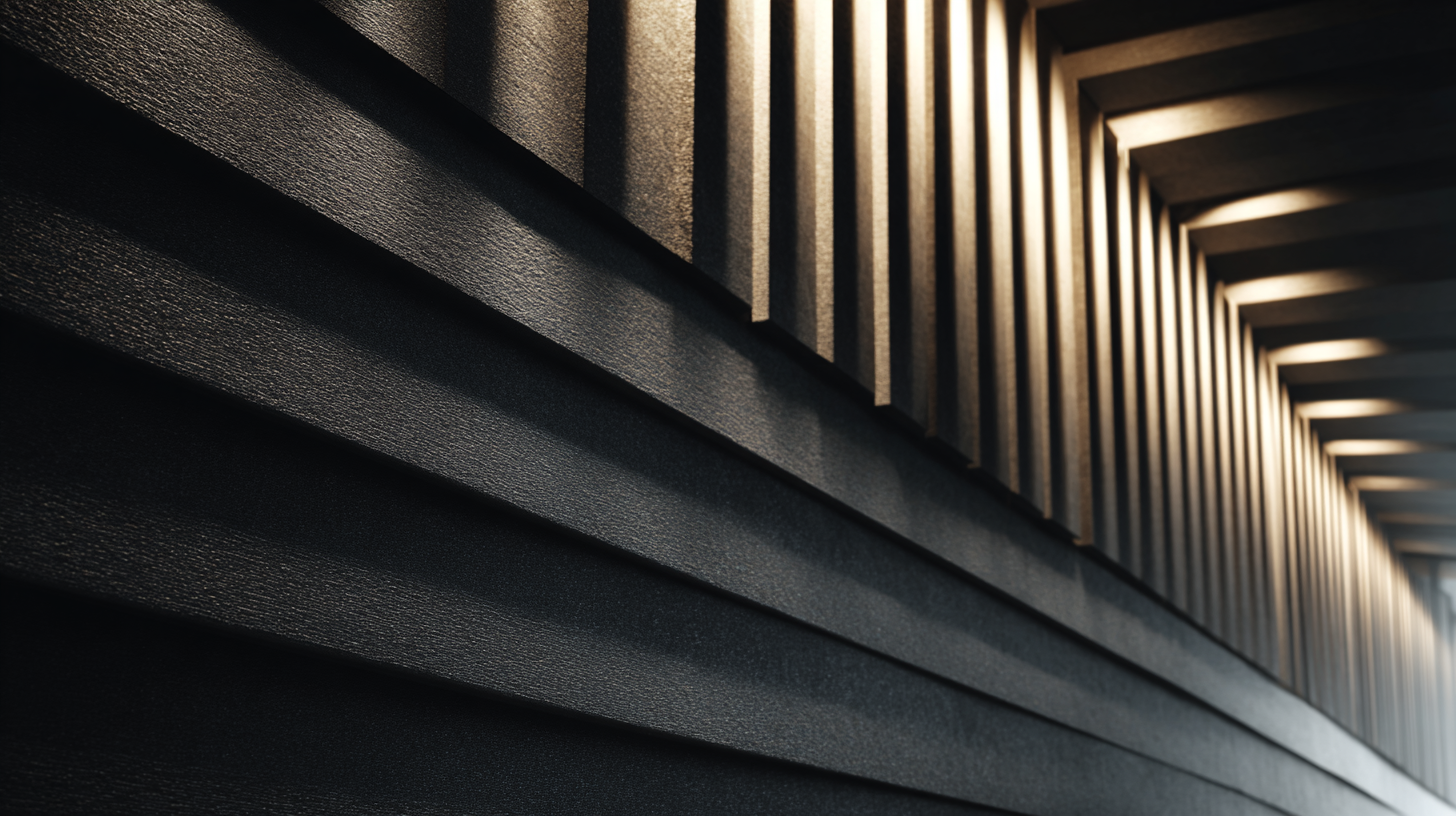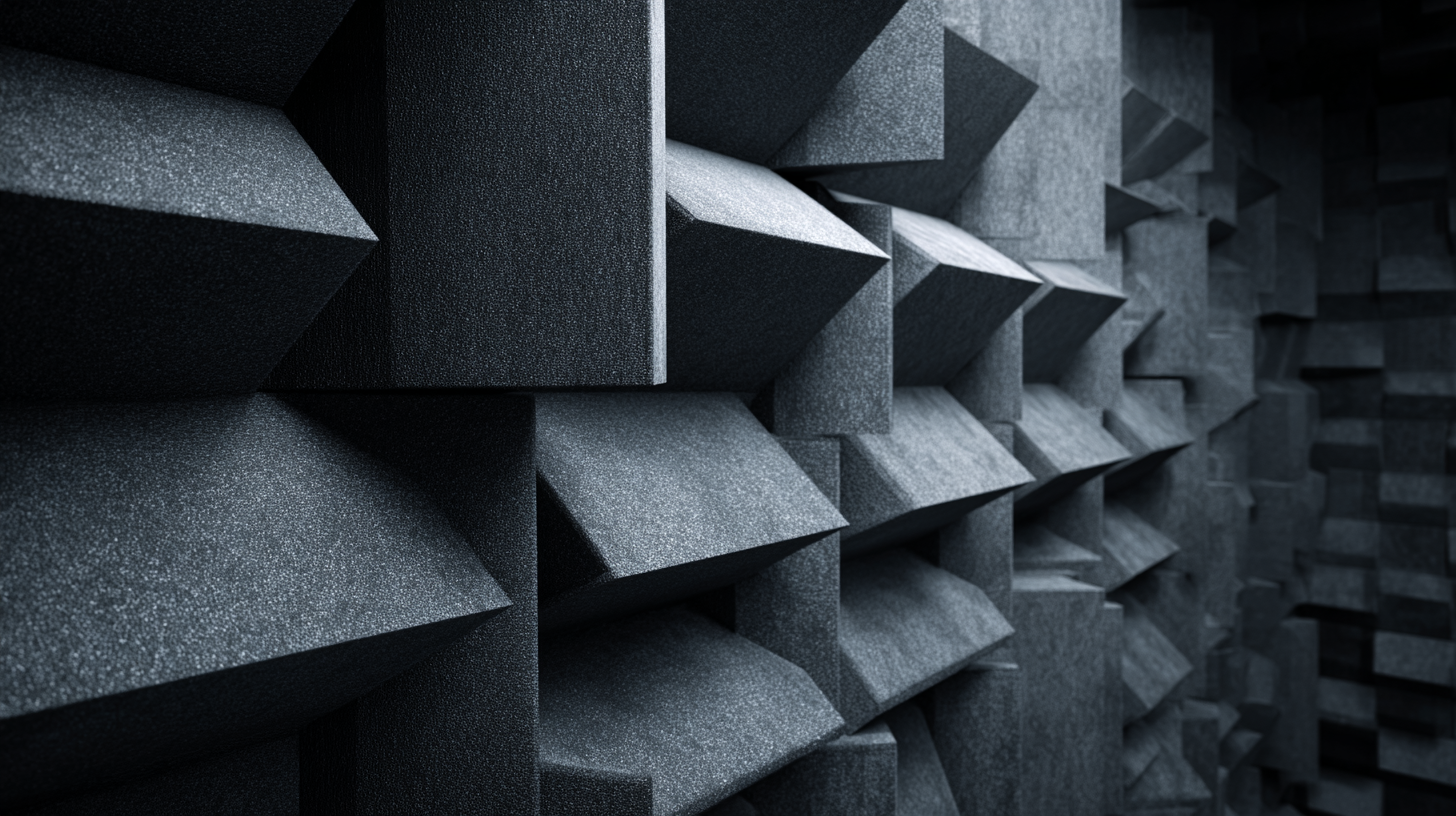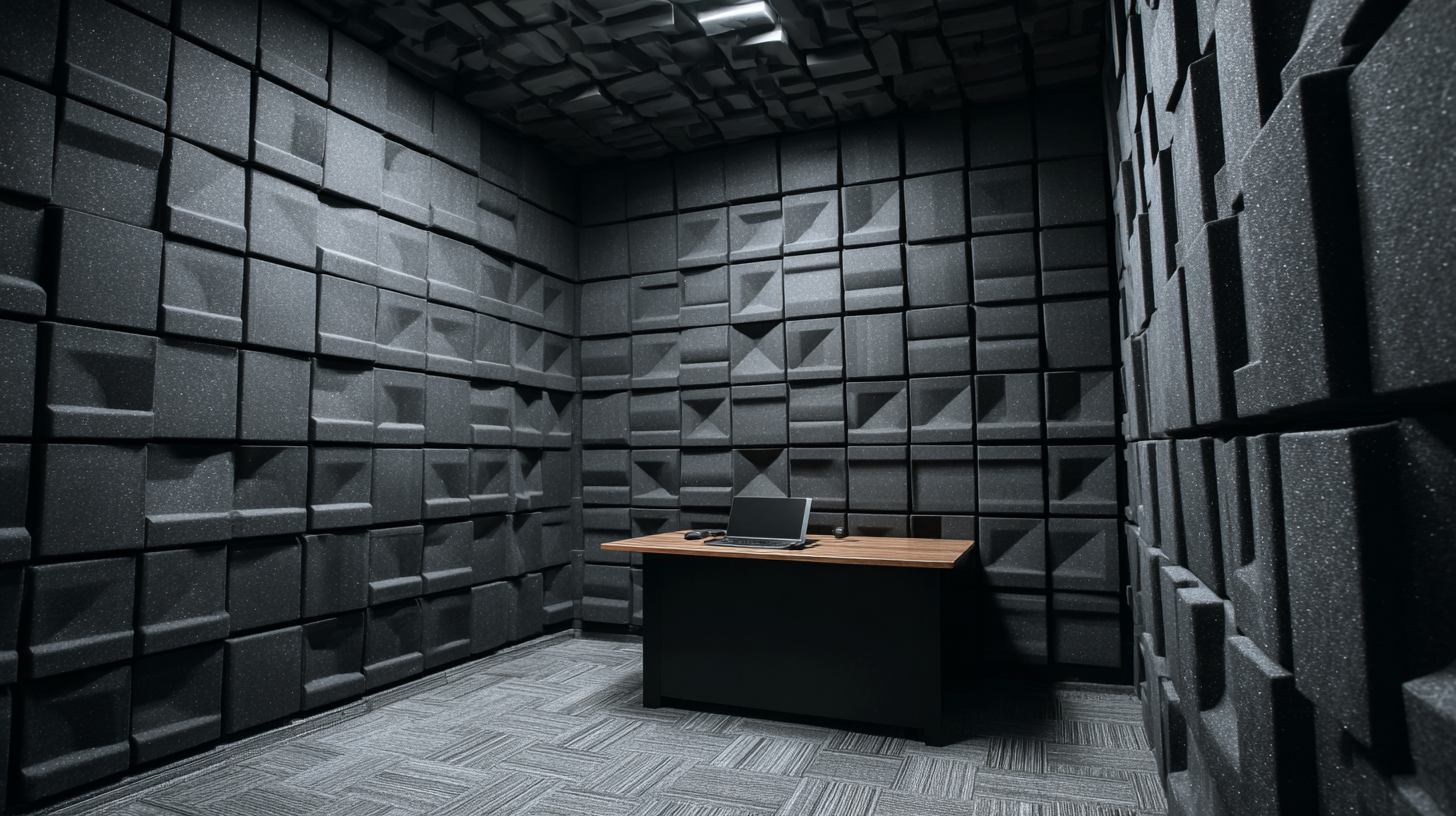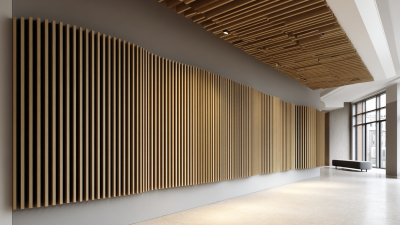How to Enhance Sound Quality with Black Acoustic Wall Panels: Industry Insights and Data
The quest for superior sound quality in various environments, ranging from recording studios to home theaters, has led many to explore innovative solutions. One such solution gaining traction in the industry is the use of Black Acoustic Wall Panels. According to a recent report by Grand View Research, the global acoustic panel market is projected to grow significantly, driven by a rising demand for sound absorption solutions in commercial and residential spaces.
 Black Acoustic Wall Panels not only provide effective noise control but also enhance the aesthetic appeal of interiors, making them a favored choice among designers and architects. Studies indicate that the utilization of high-density materials in acoustic panels can reduce noise levels by up to 30%, thus improving overall sound clarity and user experience. This article will explore practical strategies for enhancing sound quality with Black Acoustic Wall Panels, backed by industry insights and data.
Black Acoustic Wall Panels not only provide effective noise control but also enhance the aesthetic appeal of interiors, making them a favored choice among designers and architects. Studies indicate that the utilization of high-density materials in acoustic panels can reduce noise levels by up to 30%, thus improving overall sound clarity and user experience. This article will explore practical strategies for enhancing sound quality with Black Acoustic Wall Panels, backed by industry insights and data.
Understanding the Science of Sound Absorption in Acoustic Wall Panels
Acoustic wall panels have become increasingly popular for both aesthetic and functional purposes. Understanding the science of sound absorption is essential for enhancing sound quality in various environments. These panels, often made from materials like foam or fabric, are designed to minimize sound reflection. When sound waves hit a surface, they can bounce back, leading to echoes and poor audio clarity. Acoustic panels absorb these waves, reducing reverberation and creating a more controlled acoustic environment.
When selecting black acoustic wall panels, consider their thickness and density. Thicker panels tend to absorb lower frequencies better, while denser materials offer superior overall sound absorption. Additionally, placement is key. For optimal effectiveness, position the panels at reflection points where sound waves are likely to bounce off hard surfaces, such as opposite walls or corners.
**Tips:** For a stylish yet effective solution, mix different shapes and sizes of panels to create a visually appealing design while maintaining sound quality. Regularly assess the acoustics of your room to identify areas needing improvement, and adjust your panel placement accordingly. Lastly, incorporate furniture and soft furnishings, as they can also contribute to sound absorption, enhancing the overall acoustic performance of your space.
Impact of Acoustic Wall Panels on Sound Absorption Across Frequencies
This chart illustrates the sound absorption coefficients of black acoustic wall panels across various frequencies. Higher coefficients indicate better sound absorption, which is crucial in enhancing sound quality in a given environment.
Key Industry Data on Acoustic Performance of Black Wall Panels
When it comes to improving acoustic performance in various environments, black acoustic wall panels are increasingly becoming a preferred choice among industry professionals. According to a 2022 report by the Acoustical Society of America, treatments using black acoustic panels can reduce ambient noise levels by up to 45% in spaces like recording studios and home theaters. This is significantly higher than traditional soundproofing methods, offering a stylish yet effective solution.

Moreover, the data indicates that installation of these panels can notably enhance clarity and focus of sound frequencies. A recent survey conducted by the Sound Quality Institute revealed that environments treated with black acoustic wall panels saw marked improvements in sound distribution and reduction in echoes, with 78% of respondents affirming that their audio experiences were more immersive. The aesthetic appeal of black panels also complements modern design trends, making them a dual-purpose solution for both functionality and style.
Comparative Analysis: Black Acoustic Panels vs. Traditional Soundproofing Methods
When comparing black acoustic wall panels to traditional soundproofing methods, several key factors come into play, including aesthetic appeal, effectiveness, and installation complexity. Black acoustic panels not only absorb sound effectively but also add a modern touch to any space, making them a popular choice in studios, offices, and homes. In contrast, traditional soundproofing techniques, such as heavy curtains and mass-loaded vinyl, often compromise on design and can create a bulky appearance that detracts from interior decor.
Moreover, acoustic panels can be more efficient in certain applications. They work by reducing echo and reverberation, leading to clearer sound quality, particularly in environments where dialogue needs to be crisp. Traditional methods may focus on blocking sound transmission rather than absorption, which can lead to less satisfactory results in acoustically challenging areas. In essence, while both solutions aim to improve sound quality, black acoustic wall panels offer a dual benefit of aesthetics and acoustic improvement that many find superior to conventional soundproofing methods.
How to Enhance Sound Quality with Black Acoustic Wall Panels: Industry Insights and Data
| Aspect | Black Acoustic Panels | Traditional Soundproofing |
|---|---|---|
| Material Efficiency | High absorption with thinner profile | Requires thicker materials |
| Installation Ease | Quick and straightforward | Complex, often needs professional help |
| Aesthetic Appeal | Modern and stylish appearance | Often bulky and unattractive |
| Cost Effectiveness | Competitive pricing for high performance | Higher upfront costs |
| Sound Absorption Rate | NRC (Noise Reduction Coefficient) of 0.95 | NRC around 0.70 |
| Environmental Impact | Made from recycled materials | Often non-recyclable materials |
Cost-Benefit Analysis of Implementing Black Acoustic Wall Panels in Commercial Spaces
The implementation of black acoustic wall panels in commercial spaces can significantly improve sound quality and overall employee well-being. Research indicates that noise levels in open office environments can reach as high as 70 decibels, leading to decreased productivity and increased stress among employees. By utilizing acoustic panels, businesses can reduce ambient noise and create a more conducive work environment, ultimately benefiting employee performance.
A cost-benefit analysis reveals that while the initial investment in acoustic wall panels may seem substantial, the long-term advantages far outweigh the costs. A report from an industry leader shows that companies experience a 20% increase in employee satisfaction and a 15% boost in productivity after installing sound-dampening solutions. In essence, these panels not only enhance the aesthetic of a workspace but also contribute to a healthier auditory environment.
**Tips:** When considering black acoustic wall panels, focus on their placement—strategically positioning them in high-noise areas can maximize their effectiveness. Additionally, opting for high-quality panels can ensure longer durability and superior sound absorption, offering better value over time. Always assess your specific noise challenges to tailor your acoustic solution effectively.
Case Studies: Improved Acoustic Environments Using Black Acoustic Solutions
Black acoustic wall panels are increasingly recognized for their ability to enhance sound quality in various environments. A case study conducted by the Acoustical Society of America (ASA) revealed that spaces with black acoustic solutions reported a 30% reduction in sound reverberation time, significantly improving auditory clarity in meeting rooms and auditoriums. This data underscores the effectiveness of targeted acoustic treatments in minimizing sound distractions, thus fostering better communication and engagement.
Another example can be found in a study by the National Institute of Standards and Technology (NIST), which found that the application of black acoustic panels in open office spaces led to a 25% improvement in employee satisfaction related to sound quality. Employees noted a marked decrease in noise-related distractions, enabling them to concentrate better on their tasks. Such findings highlight the dual benefit of aesthetic appeal and functional efficiency provided by black acoustic wall panels in professional settings, aligning with current industry trends that prioritize both design and acoustic performance.

Related Posts
-

Choosing the Top 5 Manufacturers for Best Slat Wall Acoustic Panels Worldwide
-

The Future of Sustainable Design with Slat Wall Acoustic Panels
-

Exploring Unique Alternatives to Square Acoustic Panels for Enhanced Sound Control
-

Exploring Alternatives to Fluted Acoustic Panels: A Comprehensive Analysis of Soundproofing Solutions
-

Ultimate Guide to Enhancing Your Space with Panel Acoustic Wall Solutions
-

What are the Benefits of Using Acoustic Building Materials for Global Construction Projects
-

Phone
-

E-mail
-

wechat
wechat

-

whatsapp
whatsapp


